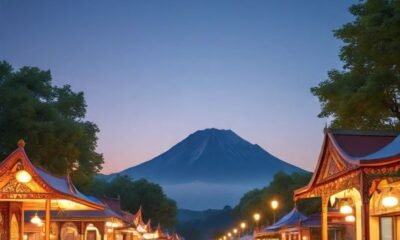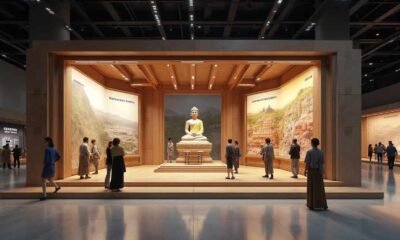Spiritual Travel
A spiritual journey from across India
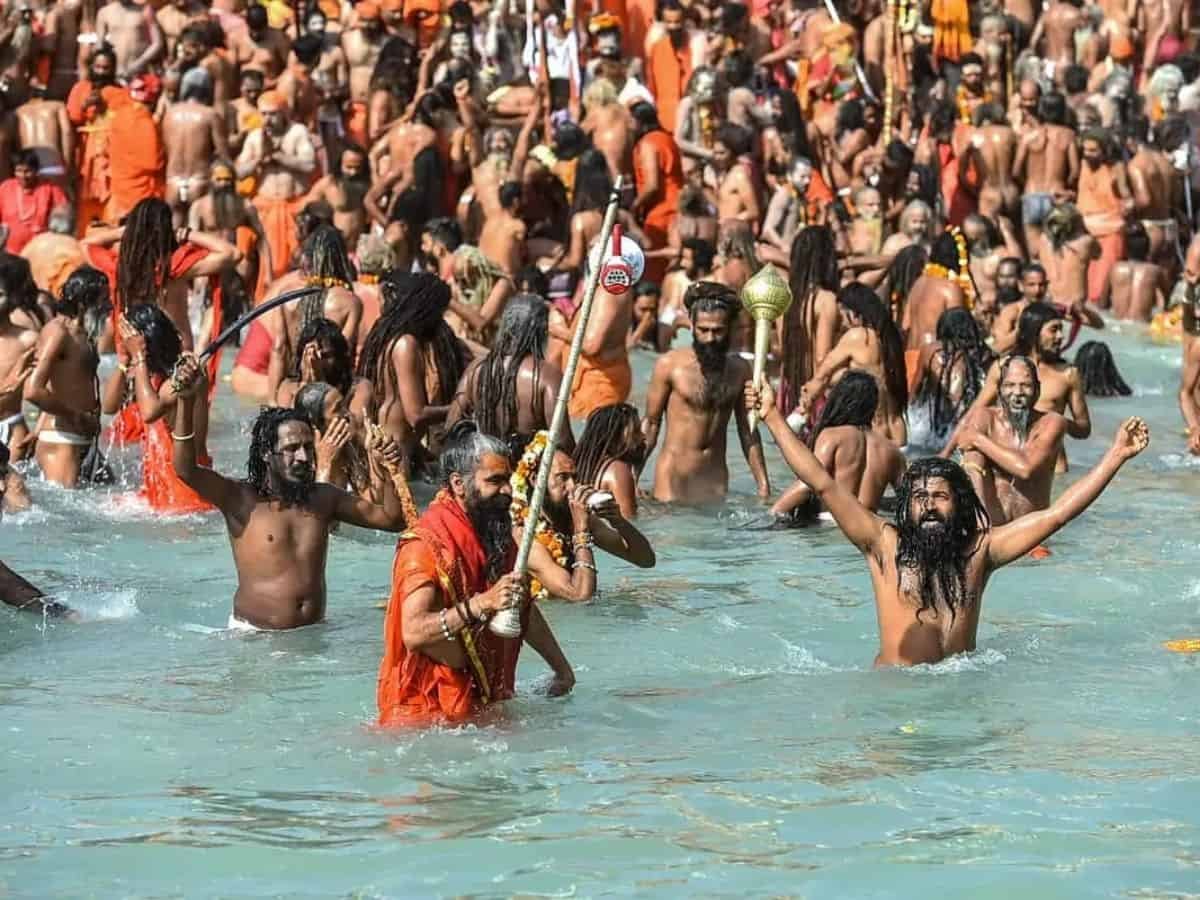
Hyderabad: One of the world’s biggest religious spectacles “Maha Kumbh Mela” in Prayagraj, Uttar Pradesh closed on Maha Shivaratri on Wednesday.
The star-studded religious gathering attracted crores of devotees from across India, the globe and proved to be one of the largest religious gatherings of the century.
The next Kumbh Mela will be at Nashik in Maharashtra in 2027 and Purna Kumbh at Haridwar in Uttarakhand in 2033.
Notwithstanding some tragic incidents, lakhs of devout especially from Southern states of Telangana, Andhra Pradesh and Karnataka visited the 45-day Kumbh Mela by cars, trains, buses and flights and ensured they had a holy dip in the famed Triveni Sangam, a confluence of three rivers Ganga, Yamuna and Saraswati.
In fact, according to those who took a dip in the holy rivers, Telugu came in large numbers by various modes of transport, especially by road to Prayagraj. There were a good number of IT employees, who drove on weekends.
Telugus take a dip
“We travelled nearly 1100 km from Hyderabad, halted 4 km from the venue, Prayagraj, and took bike rides. It was a painstaking journey. It took two to three hours to travel a distance of one km. Bikes were the best mode of transport while boat rides cost us Rs 600 to Rs 800 per head. Prices vary depending on rush. But it was worth the trouble. It was a feat to be remembered for ages,” says Chandrasekhar Patel, IT professional from Hyderabad.
Adds Harish Setty, another IT professional: “There was no way to go by car to the river, hence opted for bikes, which was the best mode of transport. Bikes charged Rs 100 to Rs 200, autos Rs 200 per head. It gave locals with bikes a good business option. The rush was unprecedented. You see people, men, women, children, old people walking with their baggage or hitchhiking on bikes to Triveni Sangam.”
While the majority of men, women, and children had a holy dip, some who could not make it sent their photos to get a holy dip!
Maha Kumbh Mela
The Maha Kumbh Mela, a sacred pilgrimage that is celebrated four times over 12 years, stands as a unique embodiment of such power.
Kumbh Mela, the world’s largest gathering, draws lakhs of pilgrims who bathe in sacred rivers seeking to purify themselves from sins and attain spiritual liberation. This episode of Mela at Prayagraj in UP began on January 13 and came close on February 26.
Kalpavas
Kalpavas, a period of fasting and spiritual discipline, holds deep significance during Maha Kumbh. This year, over 10 lakh devotees observed Kalpavas at the Triveni Sangam, concluding on Magh Purnima, with a final holy dip, pujan, and daan. As per tradition, Kalpvasis perform Satyanarayana Katha, Havan Puja, and offer donations to their Tirthpurohits. The barley sown at the start of Kalpavas is immersed in the Ganga, and the Tulsi plant is taken home as a divine blessing. The twelve-year Kalpavas cycle culminates in Maha Kumbh, followed by a community feast in their villages.
Huge revenues, employment
Government spent Rs 7,500 crore—UP State Rs 5,400 crore and Centre Rs 2100 crore. It is estimated the Mela may generate Rs 2 to 4 lakh crore in revenues, benefitting all sections of traders.
Spiritual journey to four places
Kumbh devotees not only engage in a series of spiritual rituals but also embark on an odyssey that transcends physical, cultural and even spiritual boundaries.
The sacred Kumbh Melas rotates between four holy places of Haridwar (Uttarakhand), Ujjain (Madhya Pradesh), Nashik (Maharashtra) and Prayagraj (Uttar Pradesh). The towns are located at the holy rivers from the Ganga (Ganges) to the Shipra, the Godavari and the confluence of the Ganga, Yamuna and the Saraswati in Prayagraj.
Jam-packed airport
For a change, Prayagraj airport, which used to handle modest air traffic and passenger footfall, had to cope up with un-reconnected VVIP aircraft and movements. The airport is currently operating an average of about 40 non-scheduled charters and private jets daily for the rich and famous, with figures touching 70 such flights on weekends. It is over and above the average 148 scheduled commercial passenger aircraft.
The latest such record was posted on February 21 when 24,512 passengers arrived at and departed from the airport by 236 flights on a single day, the official said. During normal times, the airport operates some 20 scheduled flights in and out, carrying less than a thousand passengers, he said.
Spiritual Travel
Bilaspur Set to Transform into Himachal’s Ultimate Adventure and Spiritual Hub
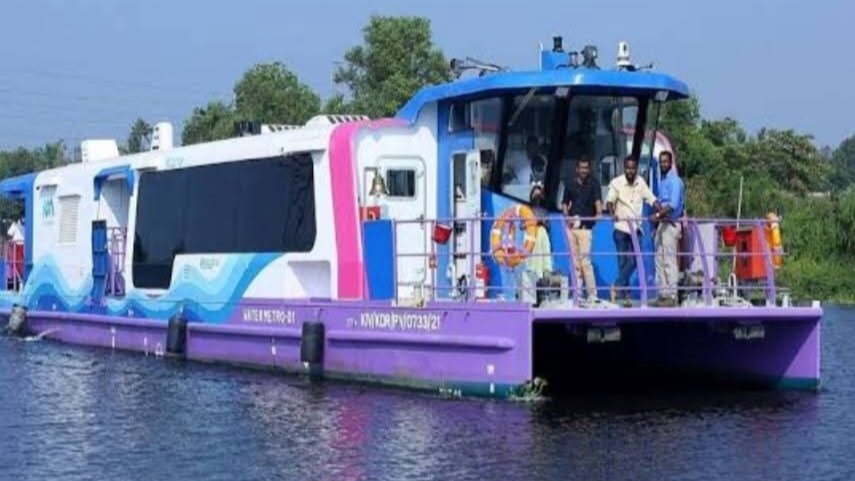
Move over, Manali and Shimla! Bilaspur is gearing up to become the state’s next big tourism hotspot, blending adrenaline-pumping adventures with serene spiritual experiences. The district administration has rolled out ambitious plans to develop water, land, and aerial tourism, promising something for thrill-seekers, pilgrims, and nature lovers alike.
A Sky-High Attraction: The Glass Bridge
Imagine walking on a transparent bridge, suspended high above breathtaking landscapes—Bilaspur’s upcoming Glass Bridge at Bharari will do just that! Designed to rival global attractions, this engineering marvel will offer daredevils an unforgettable experience while giving tourists a reason to extend their stay. Officials confirm the blueprint is ready, and construction will kick off soon after final approvals.
Sailing Through Scenic Routes: The Water Metro
Pilgrims visiting Maa Naina Devi will soon have a faster, more scenic journey thanks to the proposed Water Metro, connecting Bhakra Ghat to Kosariya Ghat. This isn’t just about convenience—it’s about turning travel into an experience. Devotees and tourists can hop on boats, enjoy the tranquil waters, and even transport their vehicles via waterways.
Jet Skis, Kayaking & More: Water Sports at Nakrana
Bhakra Dam’s pristine waters are about to get a lot more exciting! The district is eyeing water sports like jet skiing, kayaking, and boating to attract adventure junkies. The best part? Pilgrims heading to Naina Devi can now add a splash of adventure to their spiritual trip.
Bharari – The New Stopover Destination
Strategically located near Shimla, Manali, and Dharamshala, Bharari will soon feature modern tourist hubs with food plazas, parking, rest areas, and info centers. No more cramped pit stops—just smooth, comfortable breaks for travelers.
Listening to Locals: Boaters Get a Voice
Deputy Commissioner Rahul Kumar made sure local boat operators were heard during inspections, promising quick fixes to their concerns. This people-first approach ensures tourism growth benefits everyone.
Bilaspur’s transformation isn’t just about flashy infrastructure—it’s about jobs for youth, better travel experiences, and putting this hidden gem on India’s tourism radar. With projects set to launch soon, the district is poised to become a must-visit for those seeking adventure, spirituality, and untouched natural beauty.
Spiritual Travel
Shiva Tribe Debuts in Gurgaon’s Tikli-Raiseena: IMPC’s Bold Step to Merge Spirituality, Rural Tourism, and Modern Family Wellness
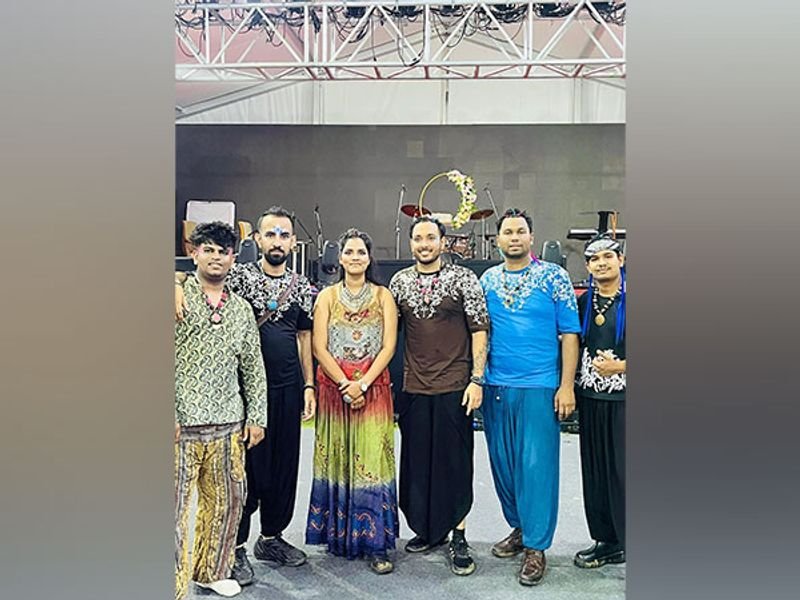
VMPL
New Delhi [India], August 4: In the lush rural landscape of Tikli-Raiseena near Gurgaon, a new chapter in India’s spiritual and rural tourism ecosystem quietly unfolded. The International Mandir Prabandhak Committee (IMPC) launched its ambitious spiritual wellness initiative–Shiva Tribe–an experience-driven, immersive space designed to reconnect Gen Z and modern families with India’s timeless spiritual roots.
Set against the tranquil backdrop of Haryana’s Aravalli fringes, Shiva Tribe is more than a mandir–it is a curated journey of self-discovery, holistic wellness, and cultural revival, seamlessly merging ancient wisdom with modern aspirations. The inaugural three-day Pran Pratishtha Mahotsav was held in July, graced by spiritual luminaries including Pujya Shri Sudhanshu Ji Maharaj, Pujya Shri Dayanand Ji Maharaj, and dignitaries such as Haryana’s former Minister Shri Om Prakash Dhankar. Business leaders, rural development advocates, and spiritual patrons attended in significant numbers–signaling a rising interest in faith-based tourism models.
Spiritual Tourism: India’s Growing Wellness Sector
India’s spiritual tourism market is undergoing a silent revolution. According to the Ministry of Tourism, the wellness and spiritual tourism segment is projected to reach USD 30 billion by 2028, growing at a CAGR of over 10%. With over 330 million domestic religious tourists recorded annually and rising international interest in authentic Indian experiences, initiatives like Shiva Tribe have the potential to create high-value, low-impact tourism models in rural belts–generating employment, fostering entrepreneurship, and revitalizing local economies.
“In today’s fragmented lifestyle, families are searching for meaningful escapes–not just vacations. Shiva Tribe is that sacred pause–a place to reconnect, reflect, and realign, together,” said Dr. Preet Sandhuu, mentor of the project and a key voice in India’s contemporary spiritual movement.
A New Blueprint: Spirituality Meets Community Living
Unlike traditional spiritual centers, Shiva Tribe offers a complete spiritual-eco retreat–including weekend live devotional music by its in-house ‘Shiva Tribe Band’, yoga sessions, mantra-infused meditations, Vedic rituals, and stay facilities for families. It’s a full-circle experience designed to inspire urban youth and families alike to step into a more conscious, value-driven lifestyle.
“Here, spirituality is not a sermon–it’s an experience,” said Shri MP Singh, project visionary and founder of ShivaTribe. “We want to build a network of such community-driven centers across rural India, using temple heritage as a catalyst for rural rejuvenation and youth engagement.”
Rural Regeneration Through Faith
The Tikli model aligns with India’s rural tourism policy goals by transforming underexplored rural regions into mindful tourism destinations. With over 60% of India’s population residing in villages, initiatives like this leverage India’s spiritual capital to promote rural entrepreneurship, handicrafts, organic farming, and ecotourism–creating a sustainable rural economy rooted in culture and community.
IMPC’s Broader Mission
The International Mandir Prabandhak Committee (IMPC), known for initiatives like the Mahasangam Yatra, Trisul Yatra and Shiv-Shakti Kendras, is rapidly becoming a bridge between India’s ancient temple traditions and its digital future. Its work focuses on temple modernization, spiritual leadership development, and community revival–backed by collaborations with scholars, saints, and civic leaders.
By anchoring the Shiva Tribe initiative in Tikli, IMPC demonstrates how faith-based community models can attract tourism, foster economic inclusion, and support national goals like ‘Viksit Bharat’ and ‘Digital Bharat’.
Shared by
(ADVERTORIAL DISCLAIMER: The above press release has been provided by VMPL. ANI will not be responsible in any way for the content of the same)
(This content is sourced from a syndicated feed and is published as received. The Tribune assumes no responsibility or liability for its accuracy, completeness, or content.)
Spiritual Travel
10 oldest temple towns in India for spiritual getaways – The Times of India
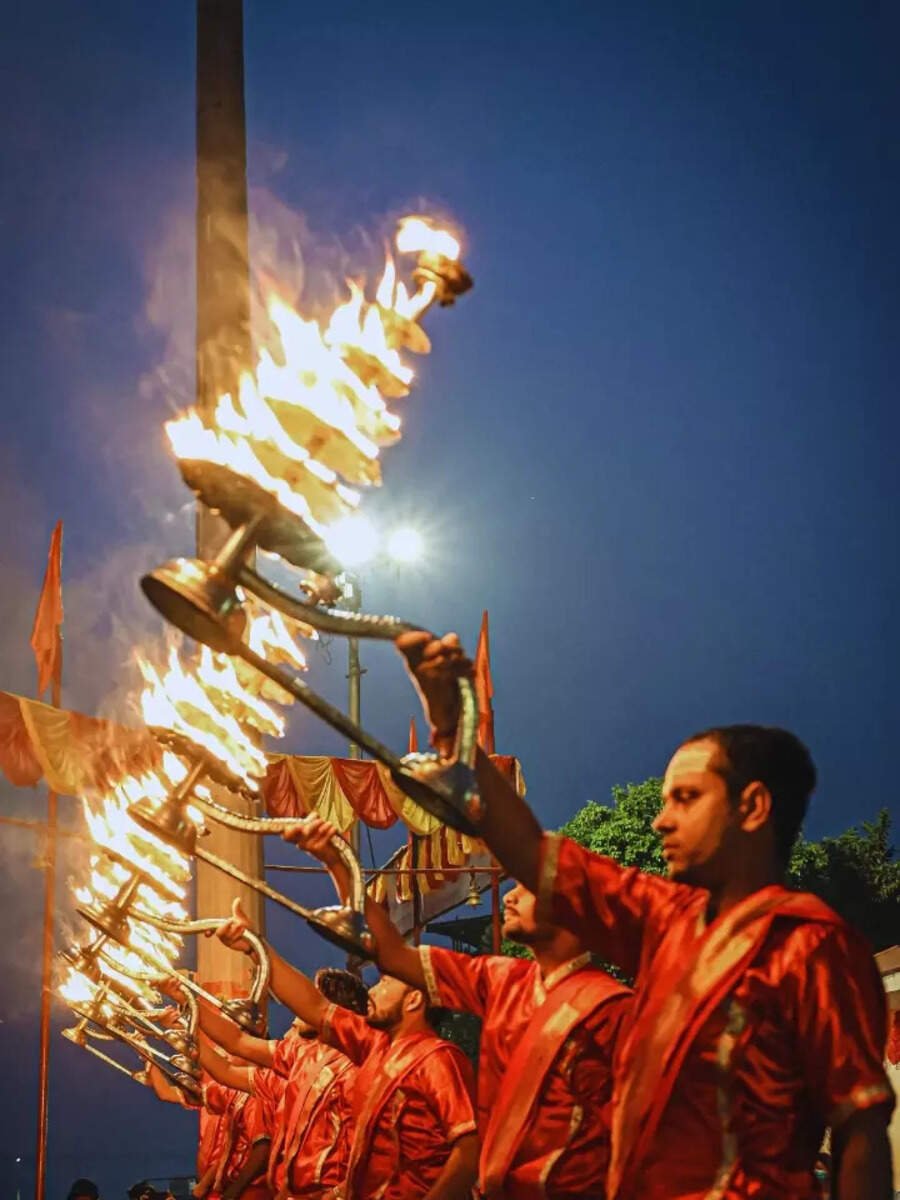
10 oldest temple towns in India for spiritual getaways The Times of India
Source link
-

 Brand Stories2 weeks ago
Brand Stories2 weeks agoBloom Hotels: A Modern Vision of Hospitality Redefining Travel
-

 Brand Stories1 week ago
Brand Stories1 week agoCheQin.ai sets a new standard for hotel booking with its AI capabilities: empowering travellers to bargain, choose the best, and book with clarity.
-

 Destinations & Things To Do2 weeks ago
Destinations & Things To Do2 weeks agoUntouched Destinations: Stunning Hidden Gems You Must Visit
-

 Destinations & Things To Do1 week ago
Destinations & Things To Do1 week agoThis Hidden Beach in India Glows at Night-But Only in One Secret Season
-

 AI in Travel2 weeks ago
AI in Travel2 weeks agoAI Travel Revolution: Must-Have Guide to the Best Experience
-

 Brand Stories1 month ago
Brand Stories1 month agoVoice AI Startup ElevenLabs Plans to Add Hubs Around the World
-

 Brand Stories3 weeks ago
Brand Stories3 weeks agoHow Elon Musk’s rogue Grok chatbot became a cautionary AI tale
-

 Asia Travel Pulse1 month ago
Asia Travel Pulse1 month agoLooking For Adventure In Asia? Here Are 7 Epic Destinations You Need To Experience At Least Once – Zee News
-

 AI in Travel1 month ago
AI in Travel1 month ago‘Will AI take my job?’ A trip to a Beijing fortune-telling bar to see what lies ahead | China
-

 Brand Stories2 weeks ago
Brand Stories2 weeks agoContactless Hospitality: Why Remote Management Technology Is Key to Seamless Guest Experiences



